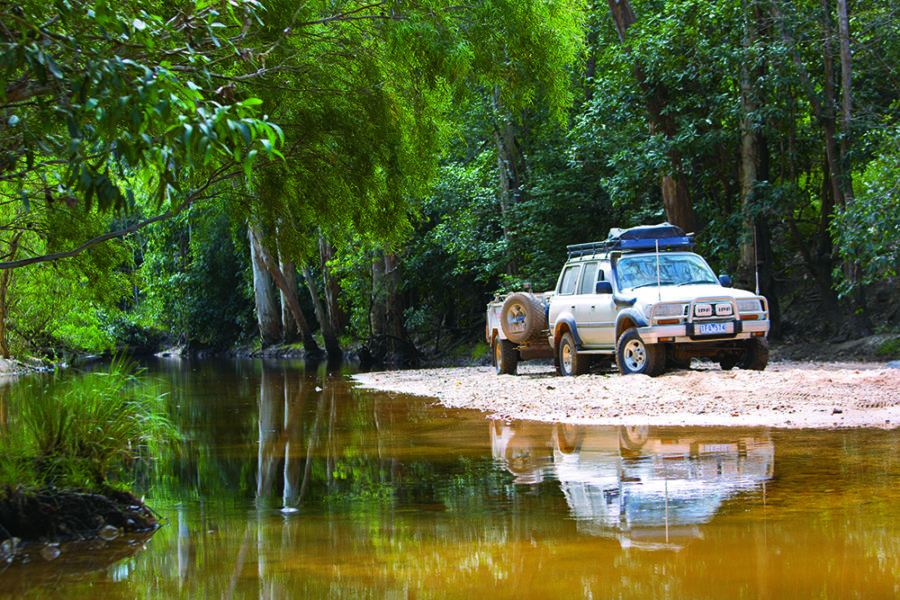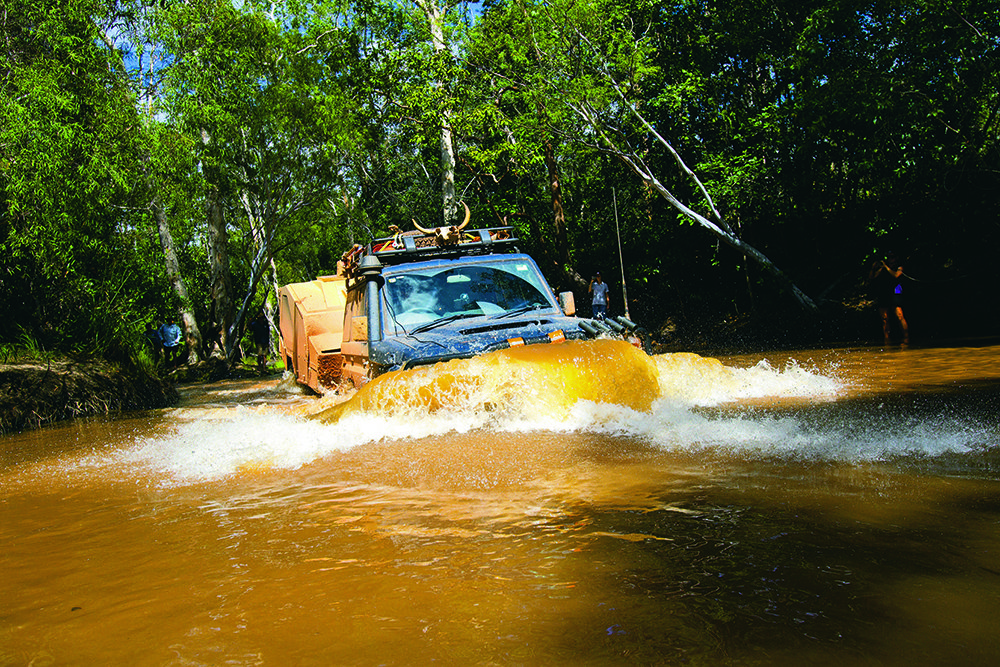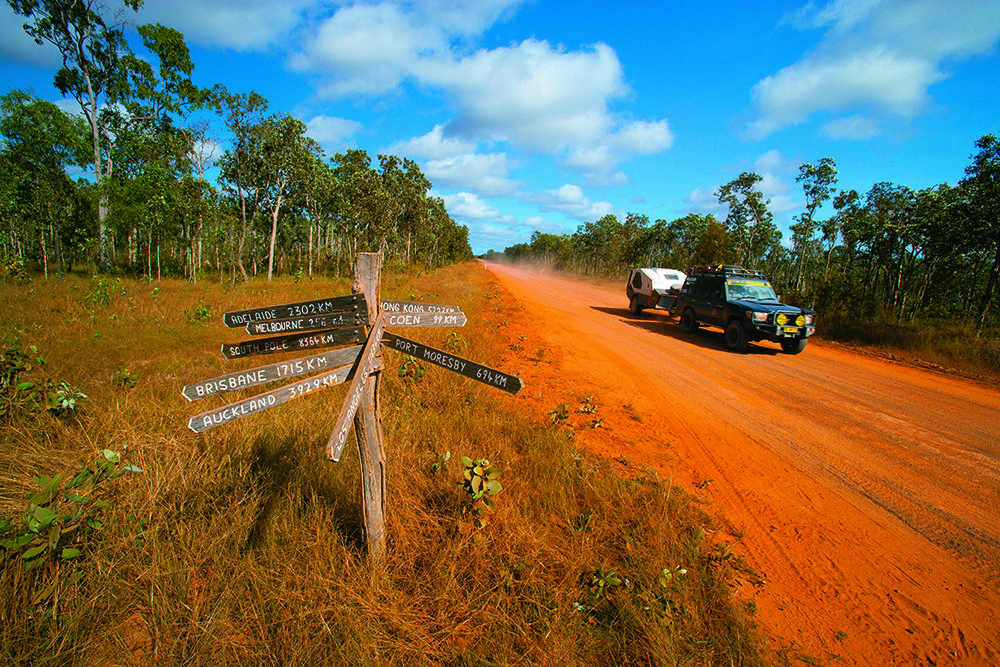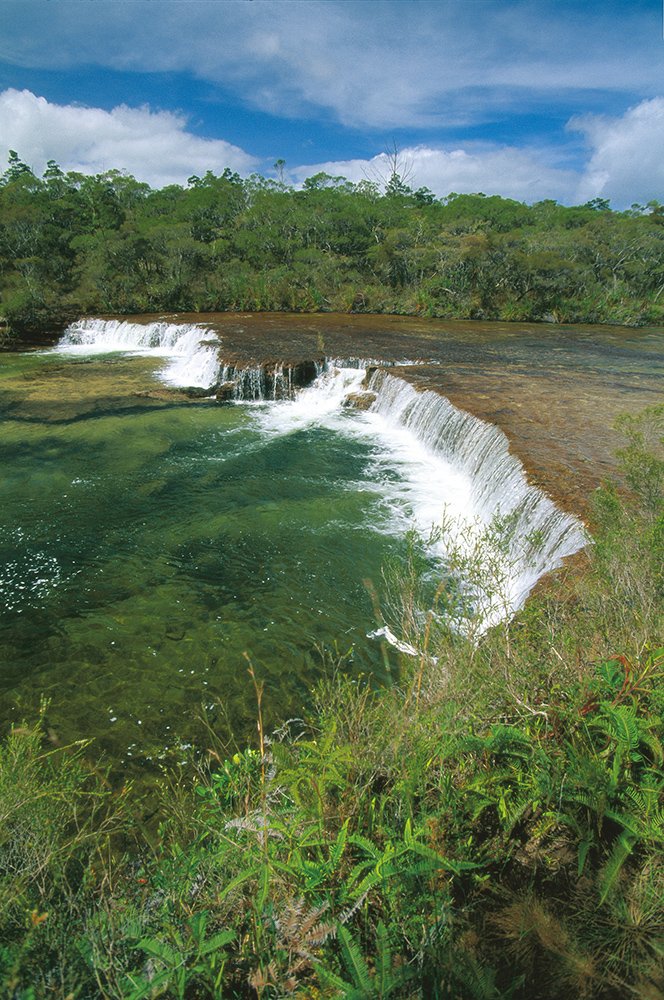Cape crusaders

WHEN BEV AND LANG Kidby drove their 1928 Austin 7, ‘Daisy’, onto the beach at Punsand Bay near the top of Cape York in June last year, they weren’t doing anything new. In fact, they were re-creating – as much as possible in this day and age – the first motorised vehicle trip to Cape York. Two New Zealanders, Hector MacQuarrie and Dick Mathews, completed that original adventure in an Austin 7 in 1928 – their gripping yarn was told in the book We and the Baby.
If anything, Lang and Bev’s recent escapade (they are some of Australia’s greatest adventurers by aircraft, motorbike and motor vehicle – see www.next-horizon.org) reinforces the fact you don’t need a heavy-duty four-wheel-drive to travel to Cape York. Now more than ever, the route is open to any SUV or light-duty 4WD, although a fully kitted 4WD will get you into a plethora of places that lie off the major dirt roads in the region, or help you get through when dirt roads turn to slippery mud. Still, for the most part, from early June until the end of September, the Cape is open to people who are willing to get a bit of dust on the duco or a chip in the windscreen.
For first-time Cape visitors, the trip begins around the tourist enclaves of Cairns and Port Douglas, as they climb the range through rainforest and head inland across the Atherton Tableland to Mt Molloy and Mt Carbine. At this point the tourist numbers start dropping and travellers become more independent and a little dustier. Once at the small enclave of Lakeland, with its rich farming land, you can swing north-west on the Peninsula Developmental Road (PDR), but we’d suggest continuing on the blacktop to Cooktown, and stopping off to enjoy one of the iconic pubs of the north, the Lions Den Hotel at Helensvale.

Image credit: Offroad images.
The Queen of the North, as Cooktown is often referred to, sits on the banks of the Endeavour River on the lee side of a wide headland dominated by the rounded dome of Grassy Hill. Captain James Cook, on his ‘discovery’ of Australia’s east coast in 1770, beached and repaired his ship, HMB Endeavour, here on the south bank of the stream, then sailed away leaving behind an Aboriginal population nonplussed by their sudden arrival and equally sudden departure. More than 100 years later, when gold was discovered on the remote Palmer River, the port of Cooktown sprang into existence as the closest and easiest access point to these fabulously rich alluvial goldfields.
By the end of 1874 there were about 36 licensed ‘hotels’ and grog shops and more than 100 brothels in Cooktown – it was a wild town to say the least. By the beginning of the 20th century, the town’s population was more than 35,000, but competition from ports further south, a few cyclones and the odd fire, saw the town decline. Most residents were evacuated during World War II and another cyclone in 1949 devastated what was left and sent more people packing. Almost a ghost town in the 1950s, tourism began to make its mark, and by 2006 the bitumen was pushed through, ensuring a steady supply of tourists and grey nomads to keep ‘the Queen’ alive and even thriving.
From Cooktown take the Battle Camp Road, which in the dry season is suitable for an all-wheel-drive vehicle driven with care. This route takes you out past Endeavour Falls and Isabella Falls, to crossings of the Normanby and Laura rivers, the only tricky spots along the whole route. Once on the western bank of the Laura you’ll find the historic Old Laura Homestead. A junction nearby means you can turn south to the township of Laura for supplies. This small town has the Quinkan & Regional Cultural Centre and is the heart of ‘Quinkan Country’, where a visit to the Aboriginal rock-art galleries that hide in the escarpment country around the town is a must. Of course, there is also a pub in town, and the traditional Laura Dance Festival is held every odd year, with June 2017 being the next great gathering of Aboriginal and Torres Strait people from across the Cape.

Lang, Bev and ‘Daisy’ on the sand just south of the northernmost tip of Cape York. (Image courtesy Lang and Bev Kidby)
Turning right, back near Old Laura Homestead, will take you through the heart of Rinyirru (Lakefield) National Park, which offers an overabundance of birdlife, kangaroos and crocodiles. A number of designated camping areas in the park handle the influx of dry season visitors, many of whom come for the incredible fishing. Our favourite camp is at the Hann Crossing at the rock shelf of the Hann River, while bird lovers will be enthralled by the passing parade at nearby Low Lake or Sweetwater Lake.
From here the route north leaves the park and meets with the PDR just south of the historic Musgrave Roadhouse, once one of the important repeater stations on the Overland Telegraph Line that stretched all the way from Cooktown to the northern tip of the country. Everybody stops here, even if it is just for a cool drink. If you’re there on a Thursday watch for the mail plane, which will buzz the strip to clear it of cattle, kangaroos and wayward tourists, before landing out the front of the roadhouse.
Coen, the next stop north, is the largest town you’ll pass without going into Weipa, and owes its existence to the discovery of gold near here in 1876. The town boomed in 1893 after the Great Northern Gold Mine opened. There’s a great museum here now and the Exchange Hotel is a beauty. There’s also pleasant bush camping a few kilometres north of town, just off the road along the sandy banks of the Coen River.
North of Coen, Oyala Thumotang National Park straddles the PDR, with an access track leading to 15 designated campsites scattered along the rivers that make up this diverse park. Fishing is allowed in most of the streams, and the wildlife is amazing.

A roadside reminder for Cape travellers as to just how remote this region is. (Image credit: Offroad images)
The Archer River and its attendant roadhouse (with its famous burgers and pleasant camping ground) is the next stop on the main route north. For those heading into the verdant rainforest of Iron Range, the unconventional community of Portland Roads, or the fabulous camping in among the trees of Chili Beach, the last resupply point is Archer River roadhouse.
Bypassing the Iron Range road and staying on the PDR soon brings you to a major junction, where you can swing westward to the mining colossus of Weipa. With its infrastructure and camping ground, Weipa makes a good base for exploring further afield, especially the mouth of the Pennefather River, the Wenlock River or the remote coast in the Aboriginal Shire of Mapoon.
Turning right at the major road junction above – opposite the Australian Wildlife Conservancy property of Piccaninny Plains, which is closed to the public – will take you onto the main track, and the only route, north.
Once you have crossed the Wenlock River on its low bridge you will come to the entry to the old Moreton Telegraph Station with its camping, accommodation and basic supplies. Further north is the entry track to the Steve Irwin Wildlife Reserve (closed to the public) before you arrive at the Bramwell Junction Roadhouse and the nearby Bramwell Station Tourist Park, both with a range of pleasant and enjoyable tourist facilities.

Fruit Bat Falls is a fantastic swimming spot in Jardine River NP. (Image credit: TEQ)
This is decision time! The easiest way north to the top of Cape York is to take the Bypass roads from Bramwell Junction to the ferry across the wide and delightful Jardine River. But it is not the best way; I always tell people to go at least one way on their Cape York adventure, via the Old Telegraph Line (OTL) Track.
If you use the Bypass roads (Southern and Northern) – so named because they bypass all the water crossings on the track between the junction and the Jardine – you can access the track at a number of points close to where the track crosses a creek or river. But it is a longer (and more boring) alternative and not as enjoyable as driving the OTL Track.
So, once on the track north from Bramwell, you begin to cross a number of streams, starting with Palm Creek, then in quick succession, the South Alice and North Alice before coming to the beautiful Dulhunty River crossing. Bertie Creek and Cholmondeley Creek follow with the intimidating Gunshot Creek next. This can be bypassed and most sensible people do so. Then it’s onto Cockatoo and Sailor creeks before the original route north is joined by the Southern Bypass road.
The Northern Bypass road swings away to the west near the track junction that can take you east a short distance to the swimming point of Fruit Bat Falls on Eliot Creek, while the OTL Track continues north. Scrubby Creek is next (and can be deep) before you arrive at Eliot Falls camping area – one spot you shouldn’t miss. Nearby are Twin Falls on Canal Creek, and, 50m away, Indian Head Falls on Eliot Creek. It is a terrific spot.

The Jardine River ferry offers the safest crossing of this huge waterway. (Image credit: TEQ)
North of the camping area you arrive at some challenging crossings – Canal Creek, then Sam, Mistake, Cannibal and the deceptively easy-looking Cypress Creek, which claims many radiators and engines each year with people taking the wrong line or driving in too fast.
Soon after you are in the heart of the Jardine Swamps that border the mighty river of the same name. You can camp in near complete isolation on the southern bank where the OTL once crossed the river – few people come here. Some still cross the stream, but it is a huge challenge, not the least being the deep lily-covered water along the north bank where crocodiles lurk.
The Jardine River ferry, a little further west and at the northern terminus of the Northern Bypass road, is a safe alternative, and once on the north bank it is an undemanding drive to the Torres Strait Islander communities of Bamaga and Seisia. There’s a choice of community-owned camping areas to stay at north of the Jardine River and a few bush camps covered by the ferry fee.
Of course, the journey isn’t finished until you drive the 32km from Bamaga, then walk through the rainforest, across the bluff and down to the rocky tip that makes up the northernmost point of the Australian mainland. That’s when you’ve made it!
While in the area, take in the delightful beach at Somerset and the historic home site and gardens of Frank Jardine and his family, who lived here from the 1860s until WWII, when they were evacuated south. They never returned.
Another not-to-miss excursion is to Thursday Island and nearby Horn Island. You’ll be pleasantly surprised by the multicultural ambience and history of ‘TI’, as Thursday Island is known, and the WWII history of Horn Island, which was bombed by the Japanese a number of times. For pearl lovers a visit to Roko Island pearl farm is enlightening. Fishers can do battle with a choice of freshwater adversaries or even bigger saltwater rivals, while the jetty at Red Island Point would have to be one of the best land-based fishing spots in all of Australia.
What more could you ask for as a holiday destination for an adventurous traveller? Cape York dishes it up – in spades.
Driving tips
Two weeks, beginning in Cairns, is the absolute minimum for an enjoyable Cape York adventure. Sure, you can do it quicker – but what’s the point of that?
If you have never driven an AWD or a 4WD vehicle offroad before, we’d recommend a 4WD course. See Four Wheel Drive Australia (www.anfwdc.asn.au), and follow the links to the state organisations that all run 4WD training courses.
Be prepared for dusty, corrugated roads. Drive slowly and take care. Drop tyre pressures on 4WD full profile tyres by 40–55kPa (6–8psi) from what you’d run on bitumen. Lower profile tyres need a 30–40kPa (4–6psi) decrease. Don’t want to do that? Be prepared for a harsher ride, more blown tyres, and more damage to suspension components. For a guide check out: http://cooper.etd.07.com.au/media/1400/cooper-drivers-guide-tyre-pressures.pdf.
If doing the OTL Track and minor roads off the PDR, be prepared for some deep-water crossings. A snorkel on your vehicle is your best insurance against damaging an engine, while a wading sheet at the front of a vehicle helps protect radiators from any damage.
Water crossings should be tackled at a speed that is just enough to create a bow-wave in front of the vehicle. This reduces the chance of water flooding into the engine bay and (fatally) entering the air intake.
Best Guides and Map
Cape York Travel & Adventure Guide by Ron & Viv Moon
Favourite Camps
Somerset Beach: bush camp near the very top on east coast.
Mutee Heads: bush camp north of the Jardine on west coast.
Eliot Falls Camping Area: Jardine River NP
Hann River: Lakefield NP
Chili Beach: Iron Range NP (Permits Required)
All national park camping grounds on Cape York demand a permit. Book online at www.nprsr.qld.gov.au or by calling 13 74 68.
The Jardine ferry fee ($99/vehicle) is for a return trip and allows camping in some bush camps north of the Jardine River. Contact the local Ranger Base at Injinoo on 07 4069 3875 for details.
Permits from the Aboriginal communities are required for camping along the coast north of Weipa.
VIDEO: Watch for more about four-wheel driving in Cape York, Queensland.
This article was originally published in the AG Tropical North Queensland Special Edition.
READ MORE:
- Bird watching in Tropical North Queensland
- The best waterfalls in Tropical North Queensland
- Rainforest to reef: Tropical North Queensland

